Side effects taking calcium. Calcium Supplementation: Benefits, Risks, and Health Impacts Explored
What are the effects of calcium intake on human health. How does calcium supplementation impact bone health and cardiovascular risk. What are the recommended calcium intake levels for different age groups. How does the body regulate calcium homeostasis. What are the best dietary sources of calcium. How do calcium supplements compare to dietary calcium.
The Role of Calcium in Human Health
Calcium is a vital mineral that plays numerous crucial roles in the human body. But what exactly makes calcium so important for our health?
Calcium is essential for:
- Building and maintaining strong bones and teeth
- Muscle contraction and relaxation
- Blood clotting
- Nerve signaling
- Hormone secretion
- Enzyme function
The human body carefully regulates calcium levels through a complex system involving the bones, kidneys, and intestines. This homeostatic control is crucial for maintaining optimal physiological function.
Calcium Homeostasis: A Delicate Balance
How does the body maintain proper calcium levels? The process of calcium homeostasis involves several key players:

- Parathyroid hormone (PTH)
- Calcitonin
- Vitamin D
- Bones (acting as a calcium reservoir)
- Kidneys (regulating calcium excretion and reabsorption)
- Intestines (controlling calcium absorption)
When blood calcium levels drop, PTH is released, stimulating bone resorption, increasing calcium reabsorption in the kidneys, and enhancing vitamin D activation. Conversely, when calcium levels are high, calcitonin is secreted to inhibit bone resorption and promote calcium excretion.
Calcium Intake Recommendations: How Much Do We Need?
Determining the optimal calcium intake is crucial for maintaining bone health and overall well-being. But how much calcium do different age groups require?
The recommended daily calcium intake varies by age and gender:
- Infants (0-6 months): 200 mg
- Infants (6-12 months): 260 mg
- Children (1-3 years): 700 mg
- Children (4-8 years): 1,000 mg
- Adolescents (9-18 years): 1,300 mg
- Adults (19-50 years): 1,000 mg
- Adult women (51+ years): 1,200 mg
- Adult men (51-70 years): 1,000 mg
- Adult men (71+ years): 1,200 mg
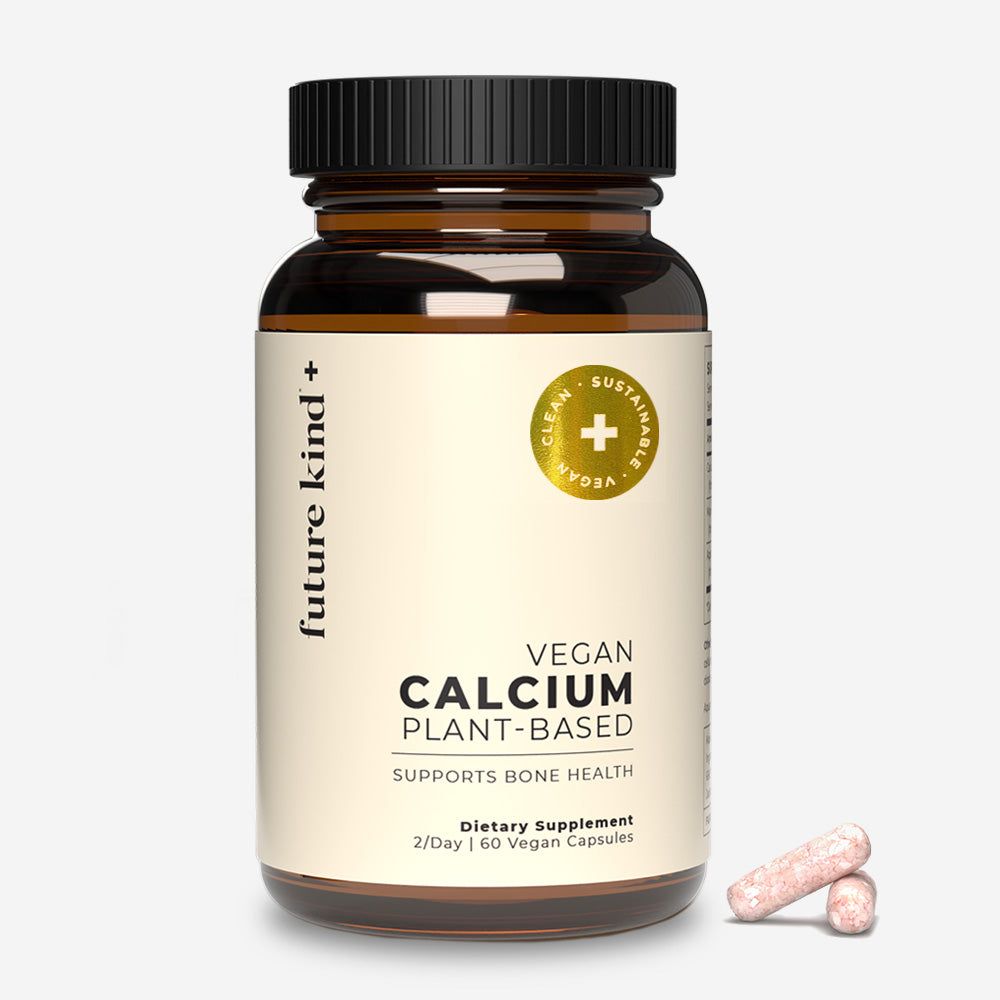
These recommendations, established by the Institute of Medicine, aim to ensure adequate calcium intake for bone health and other physiological functions. However, individual needs may vary based on factors such as overall health, medications, and dietary habits.
Dietary Sources of Calcium: Beyond Dairy
While dairy products are often touted as the primary source of calcium, numerous other foods can contribute significantly to calcium intake. What are some excellent non-dairy sources of calcium?
Top calcium-rich foods include:
- Leafy green vegetables (kale, collard greens, spinach)
- Sardines and canned salmon (with bones)
- Tofu (made with calcium sulfate)
- Fortified plant-based milk alternatives
- Almonds and Brazil nuts
- Dried figs
- White beans and other legumes
- Fortified cereals and juices
By incorporating a variety of these foods into your diet, you can meet your calcium needs through whole food sources. This approach provides additional nutrients and may be preferable for those who are lactose intolerant or following a plant-based diet.

The Pros and Cons of Calcium Supplementation
Calcium supplements have become increasingly popular, especially among older adults concerned about bone health. But are these supplements truly beneficial, or do they carry potential risks?
Potential Benefits of Calcium Supplements
Calcium supplementation may offer several advantages:
- Increased bone mineral density
- Reduced risk of osteoporosis
- Improved skeletal health in growing children and adolescents
- Potential reduction in blood pressure
- Possible protection against colorectal cancer
Potential Risks and Side Effects
However, calcium supplements are not without their drawbacks:
- Increased risk of kidney stones
- Gastrointestinal issues (constipation, bloating, gas)
- Potential interference with absorption of other minerals
- Possible increased risk of cardiovascular events (controversial)
The debate surrounding calcium supplementation highlights the importance of considering individual health status and consulting with healthcare providers before starting any supplement regimen.
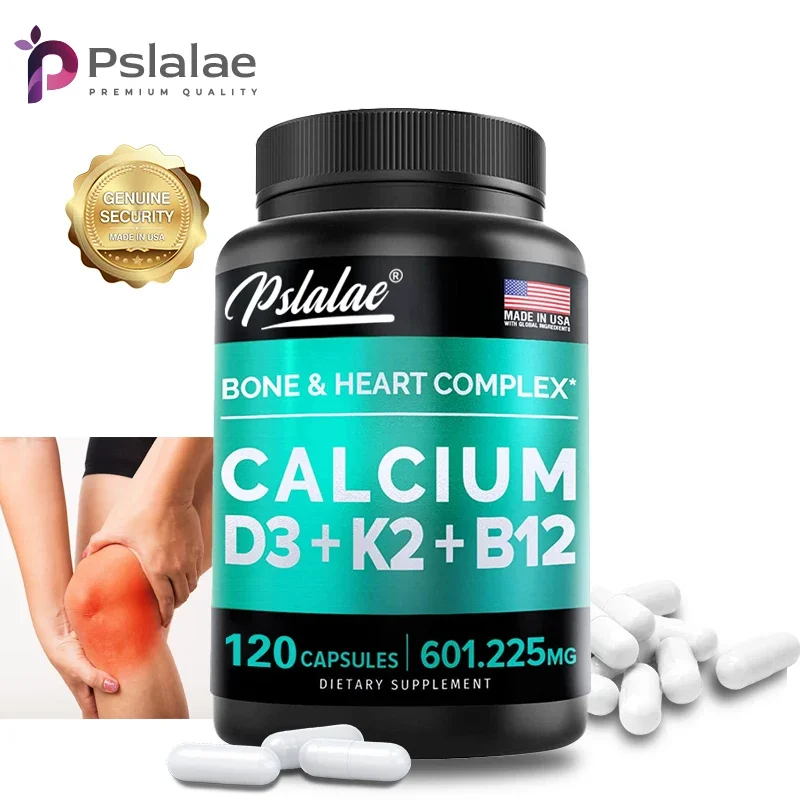
Calcium and Bone Health: A Complex Relationship
The link between calcium intake and bone health has been a subject of extensive research. How does calcium supplementation impact bone density and fracture risk?
Several large-scale studies and meta-analyses have examined this relationship:
- A meta-analysis by Bischoff-Ferrari et al. (2007) found no significant reduction in hip fracture risk with calcium supplementation.
- The Auckland Calcium Study (2014) showed no long-term benefits of calcium supplementation on bone density or fracture risk in healthy older women.
- A 2017 meta-analysis by Zhao et al. concluded that calcium supplements, with or without vitamin D, do not significantly reduce fracture risk in community-dwelling older adults.
These findings suggest that the relationship between calcium intake and bone health is more complex than previously thought. While adequate calcium is crucial for bone health, high-dose supplementation may not provide additional benefits for most individuals.
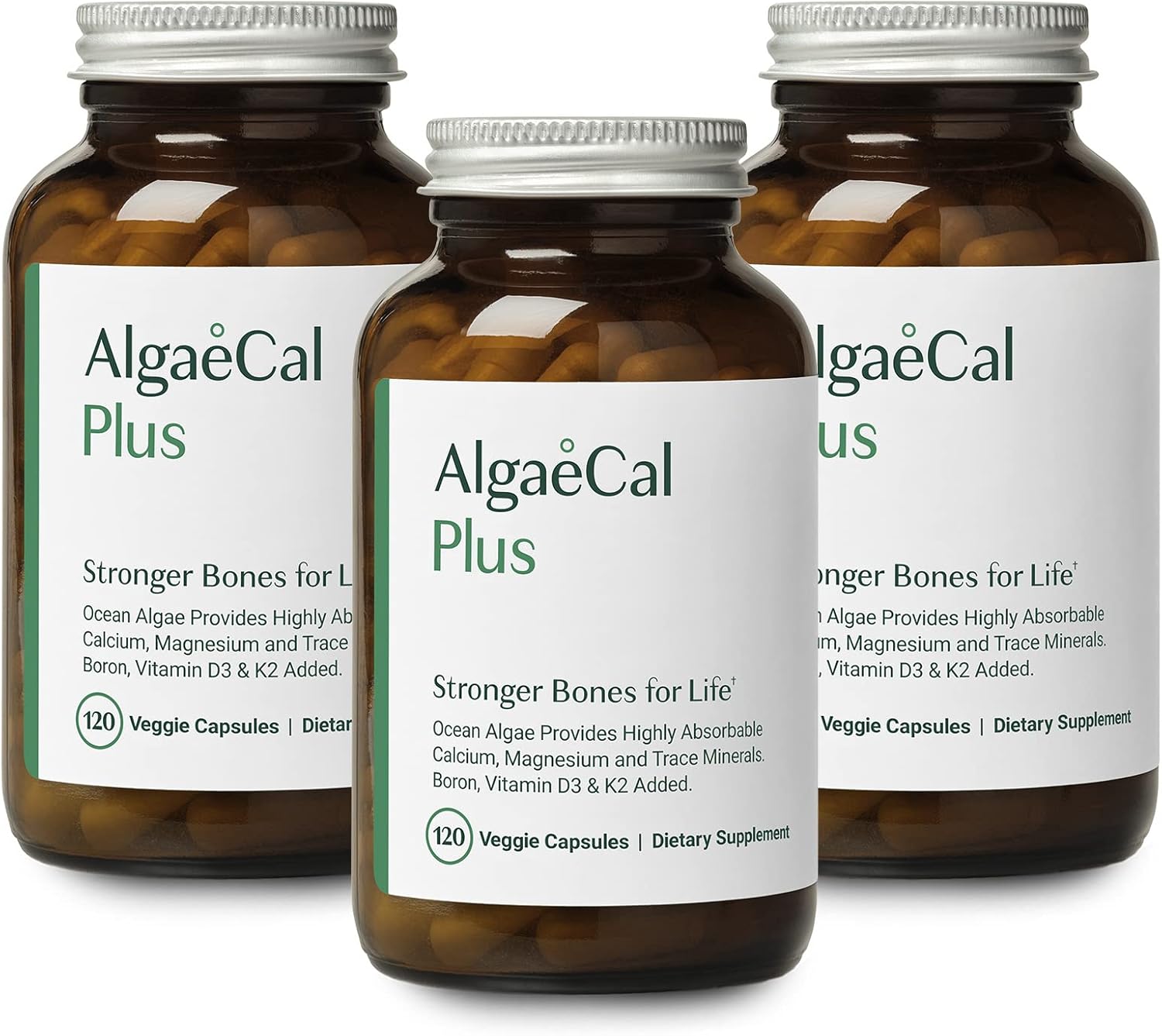
Calcium Absorption: Quality Over Quantity
Why doesn’t higher calcium intake always translate to better bone health? The answer lies in calcium absorption. The body’s ability to absorb calcium is influenced by various factors:
- Vitamin D status
- Age (absorption decreases with age)
- Hormonal changes (e.g., during pregnancy or menopause)
- Presence of other nutrients (e.g., magnesium, vitamin K)
- Timing and dosage of calcium intake
Optimizing calcium absorption may be more beneficial than simply increasing calcium intake. This underscores the importance of a holistic approach to bone health, including adequate vitamin D, regular exercise, and a balanced diet.
Cardiovascular Concerns: Calcium Supplements Under Scrutiny
Recent studies have raised concerns about the potential cardiovascular risks associated with calcium supplementation. Is there a link between calcium supplements and heart health?
Several studies have investigated this potential connection:
- A 2013 study by Xiao et al. found an increased risk of cardiovascular disease mortality in men taking calcium supplements.
- A 2017 review by Tankeu et al. highlighted growing concerns about calcium supplementation and cardiovascular risk.
- Reid et al. (2017) examined the complex relationship between calcium intake and cardiovascular outcomes, suggesting that high-dose supplements may pose risks.

The mechanisms behind this potential risk are not fully understood but may involve rapid changes in blood calcium levels leading to arterial calcification or alterations in blood clotting processes.
Balancing Bone and Heart Health
Given these concerns, how can individuals balance the need for adequate calcium intake with potential cardiovascular risks? Experts recommend:
- Prioritizing dietary sources of calcium over supplements
- Limiting calcium supplement doses to no more than 500-600 mg at a time
- Considering individual risk factors for both osteoporosis and cardiovascular disease
- Discussing supplement use with healthcare providers
- Focusing on overall diet quality and lifestyle factors that support both bone and heart health
Optimal Calcium Supplementation Strategies
For those who do require calcium supplements, what are the best practices for supplementation? Here are some evidence-based strategies:
Choosing the Right Form
Calcium supplements come in various forms, each with different absorption rates and potential side effects:
- Calcium carbonate: High elemental calcium content, requires stomach acid for absorption
- Calcium citrate: Better absorbed, especially in older adults or those taking acid-reducing medications
- Calcium gluconate and lactate: Lower elemental calcium content, may be better tolerated
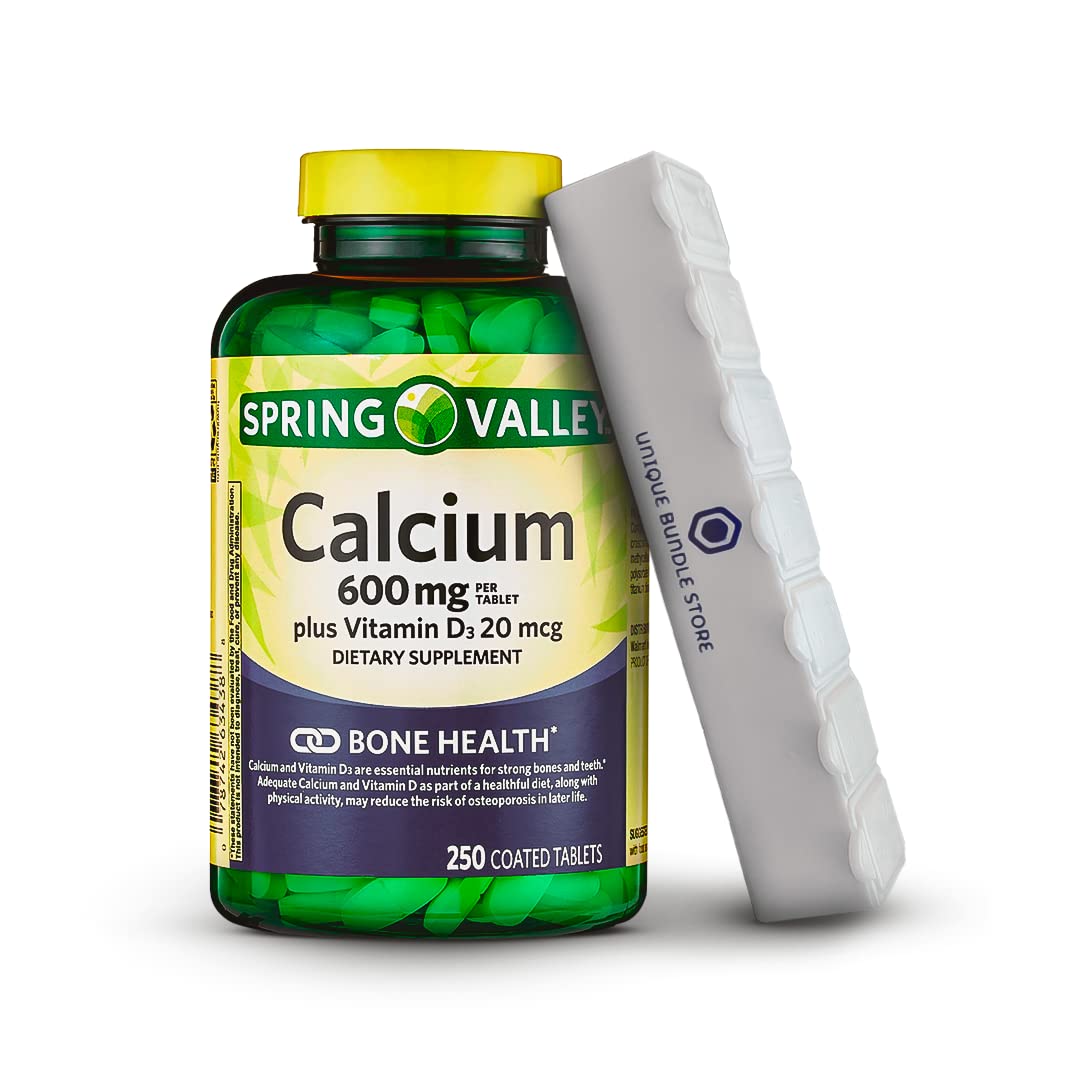
Timing and Dosage
Optimizing calcium absorption through proper timing and dosage is crucial:
- Take calcium supplements in divided doses (no more than 500-600 mg at once)
- Calcium carbonate should be taken with meals
- Calcium citrate can be taken with or without food
- Avoid taking calcium supplements with high-fiber meals or iron supplements
Combining with Other Nutrients
Certain nutrients can enhance calcium absorption and utilization:
- Vitamin D: Essential for calcium absorption, often combined in supplements
- Magnesium: Supports calcium metabolism and bone health
- Vitamin K: Plays a role in bone mineralization and may help direct calcium to bones rather than arteries
By following these strategies, individuals can maximize the benefits of calcium supplementation while minimizing potential risks and side effects.
Beyond Supplements: A Holistic Approach to Calcium and Bone Health
While calcium intake is important, it’s just one piece of the puzzle when it comes to overall bone health. What other factors contribute to strong, healthy bones?

Exercise: Building Bones Through Movement
Physical activity, particularly weight-bearing and resistance exercises, plays a crucial role in bone health:
- Stimulates bone formation
- Improves bone density
- Enhances balance and coordination, reducing fall risk
- Maintains muscle strength, which supports bones
Vitamin D: The Sunshine Vitamin
Vitamin D is essential for calcium absorption and bone health:
- Enhances calcium absorption in the intestines
- Helps maintain calcium homeostasis
- Supports bone mineralization
- Can be obtained through sunlight exposure, diet, and supplements
Other Crucial Nutrients
Several other nutrients play important roles in bone health:
- Magnesium: Involved in bone crystal formation and regulates PTH
- Vitamin K: Essential for bone protein synthesis
- Potassium: Helps maintain calcium balance and may reduce bone resorption
- Protein: Provides the structural matrix for bone
Lifestyle Factors
Certain lifestyle choices can significantly impact bone health:
- Avoiding smoking and excessive alcohol consumption
- Maintaining a healthy body weight
- Getting adequate sleep
- Managing stress levels

By adopting a comprehensive approach that includes balanced nutrition, regular exercise, and healthy lifestyle choices, individuals can support optimal bone health throughout their lives.
The Future of Calcium Research and Recommendations
As our understanding of calcium’s role in human health continues to evolve, what directions are researchers exploring? Several key areas are gaining attention:
Personalized Nutrition
The concept of personalized nutrition is gaining traction in calcium research:
- Genetic factors influencing calcium metabolism and bone health
- Tailoring calcium recommendations based on individual risk factors and biomarkers
- Developing more precise diagnostic tools for assessing calcium status and bone health
Alternative Calcium Sources
Researchers are investigating novel sources of calcium:
- Algae-based calcium supplements
- Calcium-fortified foods using nanotechnology
- Plant-based calcium sources with enhanced bioavailability
Combination Therapies
The synergistic effects of calcium with other nutrients and interventions are being explored:
- Optimizing vitamin D and calcium co-supplementation
- Combining calcium with probiotics for enhanced absorption
- Investigating the role of omega-3 fatty acids in calcium metabolism

Long-term Health Impacts
Ongoing research is focusing on the long-term effects of various calcium intake levels:
- Longitudinal studies examining lifelong calcium intake and health outcomes
- Investigating the potential protective effects of calcium against age-related diseases
- Assessing the impact of early-life calcium intake on adult health
As research in these areas progresses, we can expect more nuanced and personalized recommendations for calcium intake and supplementation. This evolving understanding will help individuals and healthcare providers make more informed decisions about calcium intake for optimal health.
The good, the bad, and the ugly of calcium supplementation: a review of calcium intake on human health
1. Reid IR. Should we prescribe calcium supplements for osteoporosis prevention? J Bone Metab. 2014;21(1):21–28. [PMC free article] [PubMed] [Google Scholar]
2. Gahche J, Bailey R, Burt V, et al. Dietary supplement use among U.S. adults has increased since NHANES III (1988–1994) NCHS Data Brief. 2011;61:1–8. [PubMed] [Google Scholar]
3. Booth A, Camacho P. A Closer look at calcium absorption and the benefits and risks of dietary versus supplemental calcium. Postgrad Med. 2013;125(6):73–81. [PubMed] [Google Scholar]
4. Bischoff-Ferrari HA, Dawson-Hughes B, Baron JA, et al. Calcium intake and hip fracture risk in men and women: a meta-analysis of prospective cohort studies and randomized controlled trials. Am J Clin Nutr. 2007;86(6):1780–1790. [PubMed] [Google Scholar]
5. Zhao JG, Zeng XT, Wang J, Liu L. Association Between Calcium or Vitamin D Supplementation and Fracture Incidence in Community-Dwelling Older Adults: A Systematic Review and Meta-analysis. JAMA. 2017;318(24):2466–2482. [PMC free article] [PubMed] [Google Scholar]
JAMA. 2017;318(24):2466–2482. [PMC free article] [PubMed] [Google Scholar]
6. Xiao Q, Murphy RA, Houston DK, Harris TB, Chow WH, Park Y. Dietary and supplemental calcium intake and cardiovascular disease mortality: the National Institutes of Health-AARP diet and health study. JAMA Intern Med. 2013;173(8):639–646. [PMC free article] [PubMed] [Google Scholar]
7. Tankeu AT, Ndip Agbor V, Noubiap JJ. Calcium supplementation and cardiovascular risk: A rising concern. J Clin Hypertens. 2017;19(6):640–646. [PMC free article] [PubMed] [Google Scholar]
8. Reid IR, Birstow SM, Bolland MJ. Calcium and Cardiovascular Disease. Endocrinol Metab. 2017;32(3):339–349. [PMC free article] [PubMed] [Google Scholar]
9. Emkey RD, Emkey GR. Calcium metabolism and correcting calcium deficiencies. Endocrinol Metab Clin North Am. 2012;41(3):527–556. [PubMed] [Google Scholar]
10. Institute of Medicine (US) Committee to Review Dietary Reference Intakes for Vitamin D and Calcium . In: Dietary Reference Intakes for Calcium and Vitamin D. Ross AC, Taylor CL, Yaktine AL, Del Valle HB, editors. Washington, DC: National Academies Press; 2011. [Accessed September 13, 2018]. Available from: http://www.ncbi.nlm.nih.gov/books/NBK56070/ [Google Scholar]
Ross AC, Taylor CL, Yaktine AL, Del Valle HB, editors. Washington, DC: National Academies Press; 2011. [Accessed September 13, 2018]. Available from: http://www.ncbi.nlm.nih.gov/books/NBK56070/ [Google Scholar]
11. Brini M, Calì T, Ottolini D, Carafoli E. Intracellular calcium homeostasis and signaling. Met Ions Life Sci. 2013;12:119–168. [PubMed] [Google Scholar]
12. Krebs J, Agellon LB, Michalak M. Ca(2+) homeostasis and endoplasmic reticulum (ER) stress: An integrated view of calcium signaling. Biochem Biophys Res Commun. 2015;460(1):114–121. [PubMed] [Google Scholar]
13. Kleeman CR, Massry SG, Coburn JW. The clinical physiology of calcium homeostasis, parathyroid hormone, and calcitonin. I. Calif Med. 1971;114(3):16–43. [PubMed] [Google Scholar]
14. Blaine J, Chonchol M, Levi M. Renal control of calcium, phosphate, and magnesium homeostasis. Clin J Am Soc Nephrol. 2015;10(7):1257–1272. [PMC free article] [PubMed] [Google Scholar]
15. Watts NB, Bilezikian JP, Camacho PM, et al. AACE Osteoporosis Task Force American Association of Clinical Endocrinologists Medical Guidelines for Clinical Practice for the diagnosis and treatment of postmenopausal osteoporosis. Endocr Pract. 2010;16(Suppl 3):1–37. [PMC free article] [PubMed] [Google Scholar]
AACE Osteoporosis Task Force American Association of Clinical Endocrinologists Medical Guidelines for Clinical Practice for the diagnosis and treatment of postmenopausal osteoporosis. Endocr Pract. 2010;16(Suppl 3):1–37. [PMC free article] [PubMed] [Google Scholar]
16. Weaver CM, Gordon CM, Janz KF, et al. The National Osteoporosis Foundation’s position statement on peak bone mass development and lifestyle factors: a systematic review and implementation recommendations. Osteoporos Int. 2016;27(4):1281–1386. [PMC free article] [PubMed] [Google Scholar]
17. Harvey NC, Biver E, Kaufman JM, et al. The role of calcium supplementation in healthy musculoskeletal ageing: An expert consensus meeting of the European Society for Clinical and Economic Aspects of Osteoporosis, Osteoarthritis and Musculoskeletal Diseases (ESCEO) and the International Foundation for Osteoporosis (IOF) Osteoporos Int. 2017;28(2):447–462. [PMC free article] [PubMed] [Google Scholar]
18. Straub DA. Calcium supplementation in clinical practice: a review of forms, doses, and indications. Nutr Clin Pract. 2007;22(3):286–296. [PubMed] [Google Scholar]
Nutr Clin Pract. 2007;22(3):286–296. [PubMed] [Google Scholar]
19. Radford LT, Bolland MJ, Mason B, et al. The Auckland calcium study: 5-year post-trial follow-up. Osteoporos Int. 2014;25(1):297–304. [PubMed] [Google Scholar]
20. Reid IR, Mason B, Horne A, et al. Randomized controlled trial of calcium in healthy older women. Am J Med. 2006;119(9):777–785. [PubMed] [Google Scholar]
21. Tang BM, Eslick GD, Nowson C, Smith C, Bensoussan A. Use of calcium or calcium in combination with vitamin D supplementation to prevent fractures and bone loss in people aged 50 years and older: a meta-analysis. Lancet. 2007;370(9588):657–666. [PubMed] [Google Scholar]
22. Quesada-Gómez JM, Diaz-Curiel M, Sosa-Henriquez M, et al. Low calcium intake and inadequate vitamin D status in postmenopausal osteoporotic women. J Steroid Biochem Mol Biol. 2013;136:175–177. [PubMed] [Google Scholar]
23. Swaim RA, Barner JC, Brown CM. The relationship of calcium intake and exercise to osteoporosis health beliefs in postmenopausal women. Res Social Adm Pharm. 2008;4(2):153–163. [PubMed] [Google Scholar]
Res Social Adm Pharm. 2008;4(2):153–163. [PubMed] [Google Scholar]
24. Jackson RD, LaCroix AZ, Gass M, et al.Women’s Health Initiative Investigators Calcium plus vitamin D supplementation and the risk of fractures. N Engl J Med. 2006;354(7):669–683. [PubMed] [Google Scholar]
25. US Preventive Services Task Force. Grossman DC, Curry SJ, et al. Vitamin D, Calcium, or Combined Supplementation for the Primary Prevention of Fractures in Community-Dwelling Adults: US Preventive Services Task Force Recommendation Statement. JAMA. 2018;319(15):1592–1599. [PubMed] [Google Scholar]
26. Islam MZ, Shamim AA, Viljakainen HT, et al. Effect of vitamin D, calcium and multiple micronutrient supplementation on vitamin D and bone status in Bangladeshi premenopausal garment factory workers with hypovitaminosis D: a double-blinded, randomised, placebo-controlled 1-year intervention. Br J Nutr. 2010;104(2):241–247. [PubMed] [Google Scholar]
27. Marino R, Misra M. Bone health in primary ovarian insufficiency./things-to-know-about-zoloft-sertraline-380791_V2-01-2c8a8e10faea43fc9d7a7d44c5abf3e4.png) Semin Reprod Med. 2011;29(4):317–327. [PubMed] [Google Scholar]
Semin Reprod Med. 2011;29(4):317–327. [PubMed] [Google Scholar]
28. Buppasiri P, Lumbiganon P, Thinkhamrop J, Ngamjarus C, Laopaiboon M. Calcium supplementation (other than for preventing or treating hypertension) for improving pregnancy and infant outcomes. Cochrane Database Syst Rev. 2011;10(10):CD007079. [PubMed] [Google Scholar]
29. Thomas M, Weisman SM. Calcium supplementation during pregnancy and lactation: effects on the mother and the fetus. Am J Obstet Gynecol. 2006;194(4):937–945. [PubMed] [Google Scholar]
30. Jarjou LM, Laskey MA, Sawo Y, Goldberg GR, Cole TJ, Prentice A. Effect of calcium supplementation in pregnancy on maternal bone outcomes in women with a low calcium intake. Am J Clin Nutr. 2010;92(2):450–457. [PMC free article] [PubMed] [Google Scholar]
31. Reid IR, Ames R, Mason B, et al. Randomized controlled trial of calcium supplementation in healthy, nonosteoporotic, older men. Arch Intern Med. 2008;168(20):2276–2282. [PubMed] [Google Scholar]
32.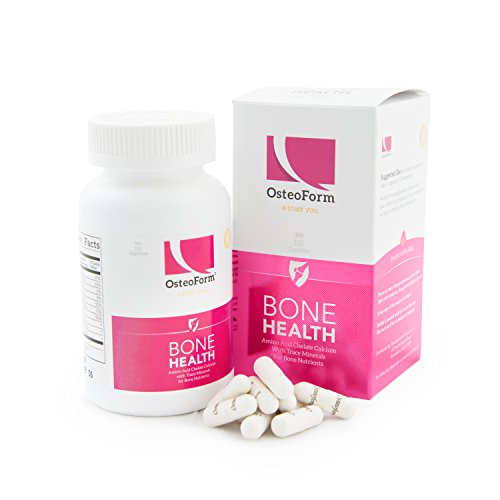 Noe EB, Chon SJ, Kim MK, et al. Associations between dietary calcium intake with prevalence of metabolic syndrome and changes in bone mineral density among Korean population. Maturitas. 2015;81(1):171. [Google Scholar]
Noe EB, Chon SJ, Kim MK, et al. Associations between dietary calcium intake with prevalence of metabolic syndrome and changes in bone mineral density among Korean population. Maturitas. 2015;81(1):171. [Google Scholar]
33. Dibba B, Prentice A, Ceesay M, Stirling DM, Cole TJ, Poskitt EM. Effect of calcium supplementation on bone mineral accretion in gambian children accustomed to a low-calcium diet. Am J Clin Nutr. 2000;71(2):544–549. [PubMed] [Google Scholar]
34. Chan R, Leung J, Woo J. A prospective cohort study examining the associations of dietary calcium intake with all-cause and cardiovascular mortality in older Chinese community-dwelling people. PLoS One. 2013;8(11):e80895. [PMC free article] [PubMed] [Google Scholar]
35. Li K, Kaaks R, Linseisen J, Rohrmann S. Associations of dietary calcium intake and calcium supplementation with myocardial infarction and stroke risk and overall cardiovascular mortality in the Heidelberg cohort of the European Prospective Investigation into Cancer and Nutrition study (EPIC-Heidelberg) Heart.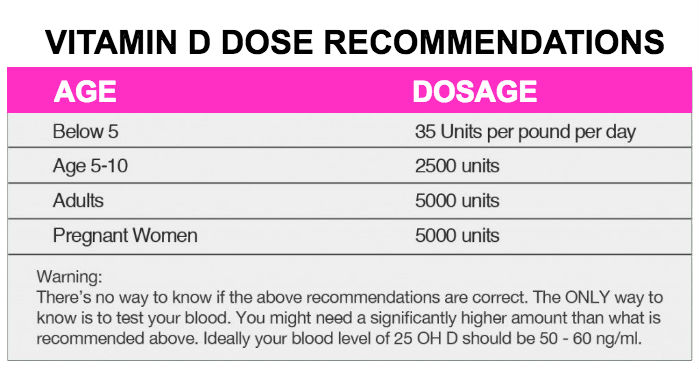 2012;98(12):920–925. [PubMed] [Google Scholar]
2012;98(12):920–925. [PubMed] [Google Scholar]
36. Bostick RM, Kushi LH, Wu Y, Meyer KA, Sellers TA, Folsom AR. Relation of calcium, vitamin D, and dairy food intake to ischemic heart disease mortality among postmenopausal women. Am J Epidemiol. 1999;149(2):151–161. [PubMed] [Google Scholar]
37. Reid IR, Mason B, Horne A, et al. Effects of calcium supplementation on serum lipid concentrations in normal older women: a randomized controlled trial. Am J Med. 2002;112(5):343–347. [PubMed] [Google Scholar]
38. Reid IR, Horne A, Mason B, Ames R, Bava U, Gamble GD. Effects of calcium supplementation on body weight and blood pressure in normal older women: a randomized controlled trial. J Clin Endocrinol Metab. 2005;90(7):3824–3829. [PubMed] [Google Scholar]
39. Witteman JC, Willett WC, Stampfer MJ, et al. A prospective study of nutritional factors and hypertension among US women. Circulation. 1989;80(5):1320–1327. [PubMed] [Google Scholar]
40. Ascherio A, Rimm EB, Giovannucci EL, et al. A prospective study of nutritional factors and hypertension among US men. Circulation. 1992;86(5):1475–1484. [PubMed] [Google Scholar]
A prospective study of nutritional factors and hypertension among US men. Circulation. 1992;86(5):1475–1484. [PubMed] [Google Scholar]
41. Duhig KE, Shennan AH. Recent advances in the diagnosis and management of pre-eclampsia. F1000 Prime Rep. 2015;7:24. [PMC free article] [PubMed] [Google Scholar]
42. World Health Organization . Guideline: Calcium Supplementation in Pregnant Women. Geneva: World Health Organization; 2013. [Accessed September 13, 2018]. Available from: http://www.ncbi.nlm.nih.gov/books/NBK154180/ [Google Scholar]
43. Hofmeyr GJ, Atallah AN, Duley L. Calcium supplementation during pregnancy for preventing hypertensive disorders and related problems. Cochrane Database Syst Rev. 2006;3(3):CD001059. [PubMed] [Google Scholar]
44. Galas A, Augustyniak M, Sochacka-Tatara E. Does dietary calcium interact with dietary fiber against colorectal cancer? A case-control study in Central Europe. Nutr J. 2013;12:134. [PMC free article] [PubMed] [Google Scholar]
45.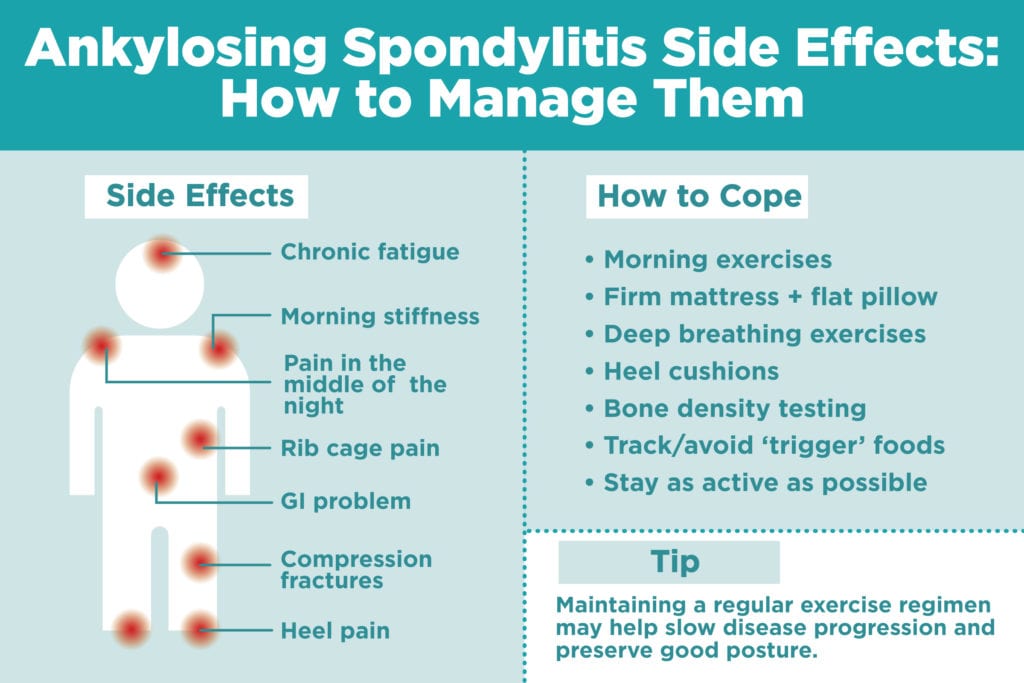 Terry P, Baron JA, Bergkvist L, Holmberg L, Wolk A. Dietary calcium and vitamin D intake and risk of colorectal cancer: a prospective cohort study in women. Nutr Cancer. 2002;43(1):39–46. [PubMed] [Google Scholar]
Terry P, Baron JA, Bergkvist L, Holmberg L, Wolk A. Dietary calcium and vitamin D intake and risk of colorectal cancer: a prospective cohort study in women. Nutr Cancer. 2002;43(1):39–46. [PubMed] [Google Scholar]
46. Baron JA, Beach M, Mandel JS, et al. Calcium supplements for the prevention of colorectal adenomas. Calcium Polyp Prevention Study Group. N Engl J Med. 1999;340(2):101–107. [PubMed] [Google Scholar]
47. Welberg JWM, Kleibeuker JH, Dermeer RV, Mulder NH, de Vries EGE, Vries E. Calcium and the Prevention of Colon Cancer. Scand J Gastroenterol. 1991;26(Sup 188):52–59. [PubMed] [Google Scholar]
48. Kim KZ, Shin A, Kim J, et al. Association between CASR polymorphisms, calcium intake, and colorectal cancer risk. PLoS One. 2013;8(3):e59628. [PMC free article] [PubMed] [Google Scholar]
49. Taylor EN, Curhan GC. Determinants of 24-hour urinary oxalate excretion. Clin J Am Soc Nephrol. 2008;3(5):1453–1460. [PMC free article] [PubMed] [Google Scholar]
50. Curhan GC, Willett WC, Speizer FE, Spiegelman D, Stampfer MJ. Comparison of dietary calcium with supplemental calcium and other nutrients as factors affecting the risk for kidney stones in women. Ann Intern Med. 1997;126(7):497–504. [PubMed] [Google Scholar]
Curhan GC, Willett WC, Speizer FE, Spiegelman D, Stampfer MJ. Comparison of dietary calcium with supplemental calcium and other nutrients as factors affecting the risk for kidney stones in women. Ann Intern Med. 1997;126(7):497–504. [PubMed] [Google Scholar]
51. Khan MI, Waguespack SG, Hu MI, Mi H. Medical management of post-surgical hypoparathyroidism. Endocr Pract. 2011;17(Suppl 1):18–25. [PubMed] [Google Scholar]
52. Pentti K, Tuppurainen MT, Honkanen R, et al. Use of calcium supplements and the risk of coronary heart disease in 52–62-year-old women: The Kuopio Osteoporosis Risk Factor and Prevention Study. Maturitas. 2009;63(1):73–78. [PubMed] [Google Scholar]
53. Prince RL, Devine A, Dhaliwal SS, Dick IM. Effects of calcium supplementation on clinical fracture and bone structure: results of a 5-year, double-blind, placebo-controlled trial in elderly women. Arch Intern Med. 2006;166(8):869–875. [PubMed] [Google Scholar]
54. Warensjö E, Byberg L, Melhus H, et al. Dietary calcium intake and risk of fracture and osteoporosis: prospective longitudinal cohort study. BMJ. 2011;342:d1473. [PMC free article] [PubMed] [Google Scholar]
Dietary calcium intake and risk of fracture and osteoporosis: prospective longitudinal cohort study. BMJ. 2011;342:d1473. [PMC free article] [PubMed] [Google Scholar]
55. Bolland MJ, Avenell A, Baron JA, et al. Effect of calcium supplements on risk of myocardial infarction and cardiovascular events: meta-analysis. BMJ. 2010;341:c3691. [PMC free article] [PubMed] [Google Scholar]
56. Cosman F, de Beur SJ, LeBoff MS, et al.National Osteoporosis Foundation Clinician’s Guide to Prevention and Treatment of Osteoporosis. Osteoporos Int. 2014;25(10):2359–2381. [PMC free article] [PubMed] [Google Scholar]
57. Bolland MJ, Barber PA, Doughty RN, et al. Vascular events in healthy older women receiving calcium supplementation: randomised controlled trial. BMJ. 2008;336(7638):262–266. [PMC free article] [PubMed] [Google Scholar]
58. Drozd M, Cubbon R, Gierula J, et al. 54 Calcium Supplementation in Patients with Chronic Heart Failure: Is it Safe? Heart. 2014;100(Suppl 3):A31.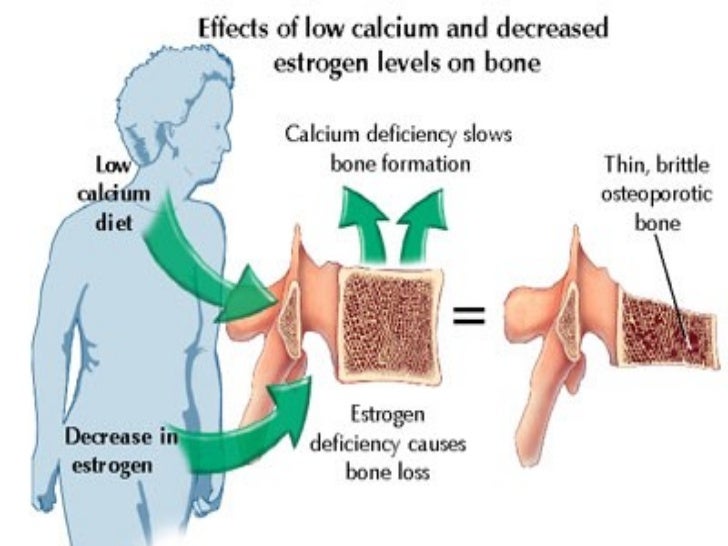 [Google Scholar]
[Google Scholar]
59. West SL, Swan VJ, Jamal SA. Effects of calcium on cardiovascular events in patients with kidney disease and in a healthy population. Clin J Am Soc Nephrol. 2010;5(Suppl 1):S41–S47. [PubMed] [Google Scholar]
60. Meier C, Kränzlin ME. Calcium supplementation, osteoporosis and cardiovascular disease. Swiss Med Wkly. 2011;141:w13260. [PubMed] [Google Scholar]
61. Michaëlsson K, Melhus H, Warensjö Lemming E, Wolk A, Byberg L. Long term calcium intake and rates of all cause and cardiovascular mortality: community based prospective longitudinal cohort study. BMJ. 2013;346:f228. [PMC free article] [PubMed] [Google Scholar]
62. Lewis JR, Zhu K, Prince RL. Adverse events from calcium supplementation: relationship to errors in myocardial infarction self-reporting in randomized controlled trials of calcium supplementation. J Bone Miner Res. 2012;27(3):719–722. [PubMed] [Google Scholar]
63. Bergsma-Kadijk JA, van’t Veer P, Kampman E, Burema J. Calcium does not protect against colorectal neoplasia. Epidemiology. 1996;7(6):590–597. [PubMed] [Google Scholar]
Epidemiology. 1996;7(6):590–597. [PubMed] [Google Scholar]
64. Worcester EM, Coe FL. Clinical practice. Calcium kidney stones. N Engl J Med. 2010;363(10):954–963. [PMC free article] [PubMed] [Google Scholar]
65. Haghighi A, Samimagham H, Gohardehi G. Calcium and vitamin D supplementation and risk of kidney stone formation in postmenopausal women. Iran J Kidney Dis. 2013;7(3):210–213. [PubMed] [Google Scholar]
66. Favus MJ. The risk of kidney stone formation: the form of calcium matters. Am J Clin Nutr. 2011;94(1):5–6. [PubMed] [Google Scholar]
67. Kakigi CL, Singh K, Wang SY, Enanoria WT, Lin SC. Self-reported Calcium Supplementation and Age-Related Macular Degeneration. JAMA Ophthalmol. 2015;133(7):746–754. [PubMed] [Google Scholar]
68. Compston J, Cooper A, Cooper C, et al. UK clinical guideline for the prevention and treatment of osteoporosis. Arch Osteoporos. 2017;12(1):43. [PMC free article] [PubMed] [Google Scholar]
69. Osteoporosis.org.nz Guidance on the Diagnosis and Management of Osteoporosis in New Zealand. [Accessed September 13, 2018]. Available from: http://osteoporosis.org.nz/resources/health-professionals/clinical-guidance/
[Accessed September 13, 2018]. Available from: http://osteoporosis.org.nz/resources/health-professionals/clinical-guidance/
70. Orimo H, Nakamura T, Hosoi T, et al. Japanese 2011 guidelines for prevention and treatment of osteoporosis – executive summary. Arch Osteoporos. 2012;7(1–2):3–20. [PMC free article] [PubMed] [Google Scholar]
71. Makras P, Vaiopoulos G, Lyritis GP. 2011 guidelines for the diagnosis and treatment of osteoporosis in Greece. J Musculoskelet Neuronal Interact. 2012;12(1):38–42. [PubMed] [Google Scholar]
72. Chinese Society of Osteoporosis and Bone Mineral Research Guideline of diagnosis and treatment of primary osteoporosis. Chin J Osteoporos Bone Miner Res. 2011;4(1):2–17. [Google Scholar]
73. Papaioannou A, Morin S, Cheung AM, et al. 2010 clinical practice guidelines for the diagnosis and management of osteoporosis in Canada: summary. Can Med Assoc J. 2010;182(17):1864–1873. [PMC free article] [PubMed] [Google Scholar]
Overview, Uses, Side Effects, Precautions, Interactions, Dosing and Reviews
Overview
Calcium is an essential nutrient found in many foods, such as dairy products.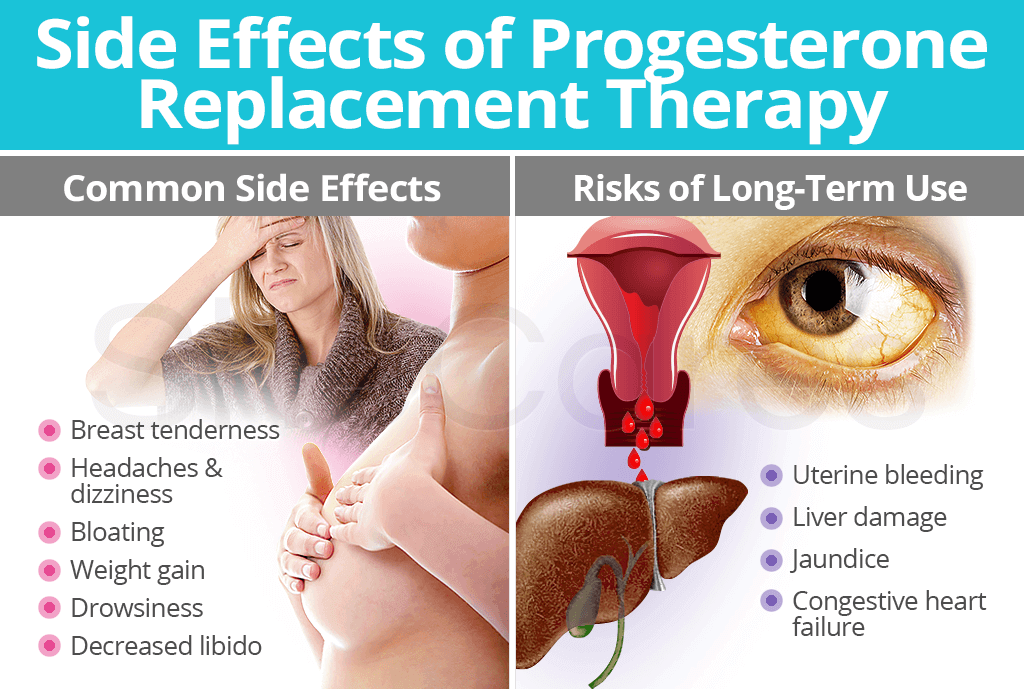 The bones and teeth contain over 99% of all calcium in the human body.
The bones and teeth contain over 99% of all calcium in the human body.
Bones are always breaking down and rebuilding. Calcium is needed for this process, but the concentration of calcium in the body tends to decline with age. Taking extra calcium helps the bones rebuild and stay strong. The heart, nerves, and blood-clotting systems also need calcium.
People commonly take calcium by mouth for the treatment and prevention of low calcium levels, muscle cramps, osteoporosis, softening of the bones, and PMS. It is also used for high blood pressure, cancer, stroke, and many other conditions, but there is no good scientific evidence to support many of these other uses.
In the US and Canada, foods that contain calcium and vitamin D are allowed to state that they might reduce the risk of osteoporosis.
Uses & Effectiveness ?
Effective for
- Indigestion (dyspepsia). Taking calcium carbonate by mouth as an antacid is effective for treating indigestion.

- High levels of potassium in the blood (hyperkalemia). Giving calcium gluconate by IV can reverse heart problems caused by high potassium levels. IV products can only be given by a healthcare provider.
- Low levels of calcium in the blood (hypocalcemia). Taking calcium by mouth and by IV is effective for treating and preventing low calcium levels. IV products can only be given by a healthcare provider.
- Kidney failure. Taking calcium carbonate or calcium acetate by mouth is effective for controlling high phosphate levels in the blood in people with kidney failure. Taking calcium by mouth also seems to help reduce blood pressure in people with kidney failure.
Likely Effective for
- Bone loss in people taking drugs called corticosteroids. Taking calcium and vitamin D by mouth seems to reduce bone density loss in people using corticosteroid drugs long-term.
- Overactive parathyroid (hyperparathyroidism). Taking calcium by mouth reduces parathyroid hormone levels in people with kidney failure and parathyroid hormone levels that are too high.

- Weak and brittle bones (osteoporosis). Consuming adequate amounts of calcium, both from the diet and supplements, is effective for preventing bone loss and treating osteoporosis. Taking calcium by mouth, alone or with vitamin D, also helps prevent fractures in people with osteoporosis.
- Premenstrual syndrome (PMS). Consuming adequate amounts of calcium, both from the diet and supplements, seems to significantly reduce mood swings, bloating, food cravings, and pain.
Possibly Effective for
- Colon cancer, rectal cancer. Taking calcium supplements by mouth or increasing intake from the diet seems to reduces the risk of colorectal cancer. But people with low levels of vitamin D don’t seem to benefit from calcium supplements, nor do people who are overweight or obese.
- Increasing bone strength in the unborn baby. Taking calcium supplements by mouth during pregnancy increases the bone mineral density of the baby when calcium intake from the diet is low.

- High blood pressure. Taking calcium supplements by mouth seems to reduce blood pressure by a small amount in people with or without high blood pressure.
- Softening of the bones (osteomalacia). Taking calcium by mouth seems to help reverse softening of the bones caused by very low calcium intake.
- A pregnancy complication marked by high blood pressure and protein in the urine (pre-eclampsia). Taking 1-2 grams of calcium by mouth daily seems to reduce the risk of pregnancy-related high blood pressure. It seems to be most helpful in those who are high risk and have low calcium levels.
- Softening of bones in children, often due to vitamin D deficiency (rickets). Taking calcium by mouth seems to help reverse softening of the bones in children with very low calcium intake.
- Preventing tooth loss (tooth retention). Taking calcium and vitamin D by mouth appears to help prevent tooth loss in older people.
Possibly Ineffective for
- Breast cancer.
 Taking calcium by mouth doesn’t reduce the risk for breast cancer.
Taking calcium by mouth doesn’t reduce the risk for breast cancer. - Fractures. Taking calcium by mouth, alone or with vitamin D, doesn’t seem to prevent fractures in older people who do not have osteoporosis.
- Obesity. Taking calcium by mouth doesn’t seem to help with weight loss.
- Death from any cause. Taking calcium supplements by mouth doesn’t seem to reduce the overall risk of death.
Side Effects
When taken by mouth: Calcium is likely safe when used in recommended amounts of about 1000-1200 mg daily. Calcium can cause some minor side effects such as belching or gas. But calcium is possibly unsafe when taken in doses above the daily tolerable upper intake level (UL). The UL is 2500 mg for adults ages 19-50 years and 2000 mg for adults over 50 years. Taking more than this daily can increase the chance of having serious side effects.
Special Precautions & Warnings:
Pregnancy and breast-feeding: Calcium is likely safe when taken by mouth in recommended amounts. But calcium is possibly unsafe when taken by mouth in doses above the daily tolerable upper intake level (UL). The UL is 3000 mg for those under 18 years of age and 2500 mg for those over 18 years of age. Higher doses might increase the risk of seizures in the infant. Be sure to consider total calcium intake from both dietary and supplemental sources of calcium. Avoid taking more than 1000-1200 mg of calcium from supplements daily unless prescribed by your doctor.
But calcium is possibly unsafe when taken by mouth in doses above the daily tolerable upper intake level (UL). The UL is 3000 mg for those under 18 years of age and 2500 mg for those over 18 years of age. Higher doses might increase the risk of seizures in the infant. Be sure to consider total calcium intake from both dietary and supplemental sources of calcium. Avoid taking more than 1000-1200 mg of calcium from supplements daily unless prescribed by your doctor.
Children: Calcium is likely safe when taken by mouth in recommended amounts. But calcium is possibly unsafe when taken by mouth in doses above the daily tolerable upper intake level (UL). The UL is 1000 mg for those 0-6 months old, 1500 mg for those 6-12 months old, 2500 mg for those 1-8 years old, and 3000 mg for those 9-18 years old. Children should consume enough calcium to meet daily requirements, but should not consume extra calcium.
Low acid levels in the stomach (achlorhydria): People with low levels of gastric acid absorb less calcium if calcium is taken on an empty stomach. People with low acid levels should take calcium supplements with meals.
People with low acid levels should take calcium supplements with meals.
Too much calcium in the blood (as in parathyroid gland disorders and sarcoidosis): Calcium should be avoided if you have a condition that causes high calcium levels. Taking calcium supplements can cause calcium levels to increase even more.
Kidney disorders: In people with kidney disorders, taking calcium supplements can increase calcium levels too much. Speak with a healthcare provider before taking calcium supplements.
Smoking: People who smoke absorb less calcium from the stomach and might require calcium supplements.
Stroke: Taking calcium supplements for 5 or more years might increase the chance of developing dementia in people who have had a stroke. More research is needed to know if calcium supplements should be avoided after a stroke.
Special Precautions and Warnings
When taken by mouth: Calcium is likely safe when used in recommended amounts of about 1000-1200 mg daily. Calcium can cause some minor side effects such as belching or gas. But calcium is possibly unsafe when taken in doses above the daily tolerable upper intake level (UL). The UL is 2500 mg for adults ages 19-50 years and 2000 mg for adults over 50 years. Taking more than this daily can increase the chance of having serious side effects.
Calcium can cause some minor side effects such as belching or gas. But calcium is possibly unsafe when taken in doses above the daily tolerable upper intake level (UL). The UL is 2500 mg for adults ages 19-50 years and 2000 mg for adults over 50 years. Taking more than this daily can increase the chance of having serious side effects.
Special Precautions & Warnings:
Pregnancy and breast-feeding: Calcium is likely safe when taken by mouth in recommended amounts. But calcium is possibly unsafe when taken by mouth in doses above the daily tolerable upper intake level (UL). The UL is 3000 mg for those under 18 years of age and 2500 mg for those over 18 years of age. Higher doses might increase the risk of seizures in the infant. Be sure to consider total calcium intake from both dietary and supplemental sources of calcium. Avoid taking more than 1000-1200 mg of calcium from supplements daily unless prescribed by your doctor.
Children: Calcium is likely safe when taken by mouth in recommended amounts. But calcium is possibly unsafe when taken by mouth in doses above the daily tolerable upper intake level (UL). The UL is 1000 mg for those 0-6 months old, 1500 mg for those 6-12 months old, 2500 mg for those 1-8 years old, and 3000 mg for those 9-18 years old. Children should consume enough calcium to meet daily requirements, but should not consume extra calcium.
But calcium is possibly unsafe when taken by mouth in doses above the daily tolerable upper intake level (UL). The UL is 1000 mg for those 0-6 months old, 1500 mg for those 6-12 months old, 2500 mg for those 1-8 years old, and 3000 mg for those 9-18 years old. Children should consume enough calcium to meet daily requirements, but should not consume extra calcium.
Low acid levels in the stomach (achlorhydria): People with low levels of gastric acid absorb less calcium if calcium is taken on an empty stomach. People with low acid levels should take calcium supplements with meals.
Too much calcium in the blood (as in parathyroid gland disorders and sarcoidosis): Calcium should be avoided if you have a condition that causes high calcium levels. Taking calcium supplements can cause calcium levels to increase even more.
Kidney disorders: In people with kidney disorders, taking calcium supplements can increase calcium levels too much. Speak with a healthcare provider before taking calcium supplements.
Smoking: People who smoke absorb less calcium from the stomach and might require calcium supplements.
Stroke: Taking calcium supplements for 5 or more years might increase the chance of developing dementia in people who have had a stroke. More research is needed to know if calcium supplements should be avoided after a stroke.
Interactions ?
Administering intravenous ceftriaxone and calcium together can result in life-threatening damage to the lungs and kidneys. Calcium should not be administered intravenously within 48 hours of intravenous ceftriaxone. This interaction is not a concern when calcium is taken by mouth.
Taking calcium along with dolutegravir can reduce blood levels of dolutegravir. This might decrease the effects of dolutegravir.
 To avoid this interaction, dolutegravir should be taken 2 hours before or 6 hours after taking calcium.
To avoid this interaction, dolutegravir should be taken 2 hours before or 6 hours after taking calcium.Taking calcium along with elvitegravir can reduce blood levels of elvitegravir. This might decrease the effects of elvitegravir. To avoid this interaction, elvitegravir should be taken 2 hours before or 2 hours after taking calcium.
Major Interaction
Do not take this combination
Calcium might decrease how well some antibiotics work. In the gut, calcium binds to antibiotics known as “quinolones.” This can decrease the amount of these drugs that the body absorbs. To avoid this interaction, take these drugs at least 2 hours before or 4 to 6 hours after calcium.
Calcium might decrease how well some antibiotics work. In the gut, calcium binds to antibiotics known as “tetracyclines.
 ” This can decrease the amount of these drugs that the body absorbs. To avoid this interaction, take these drugs at least 2 hours before or 4 to 6 hours after calcium.
” This can decrease the amount of these drugs that the body absorbs. To avoid this interaction, take these drugs at least 2 hours before or 4 to 6 hours after calcium.Calcium can decrease how much bisphosphonate the body absorbs, which can decrease the effects of bisphosphonates. To avoid this interaction, take bisphosphonates at least 30 minutes before calcium or at a different time of day.
Calcipotriene is a drug that is similar to vitamin D. Vitamin D helps the body absorb calcium. Taking calcium supplements along with calcipotriene might increase levels of calcium too much.
Calcium can affect your heart. Digoxin is used to help your heart beat stronger. Taking calcium along with digoxin might increase the effects of digoxin and lead to an irregular heartbeat. If you are taking digoxin, talk to your doctor before taking calcium supplements.

Taking large amounts of calcium along with diltiazem might decrease the effects of diltiazem.
Calcium can decrease how much levothyroxine the body absorbs. Taking calcium along with levothyroxine might decrease the effects of levothyroxine. Levothyroxine and calcium should be taken at least 4 hours apart.
Taking calcium with sotalol can decrease how much sotalol the body absorbs. Taking calcium along with sotalol might decrease the effects of sotalol. To avoid this interaction, take calcium at least 2 hours before or 4 hours after taking sotalol.
Taking large amounts of calcium along with verapamil might decrease the effects of verapamil.
Some “water pills” increase the amount of calcium in the body.
 Taking large amounts of calcium with some “water pills” might cause there to be too much calcium in the body. This could cause serious side effects, including kidney problems.
Taking large amounts of calcium with some “water pills” might cause there to be too much calcium in the body. This could cause serious side effects, including kidney problems.Calcium citrate can increase how much aluminum the body absorbs from aluminum hydroxide. This increase in aluminum levels can cause serious side effects, especially in people with kidney disease. But not all forms of calcium have this effect. Calcium acetate does not appear to increase aluminum levels.
Long-term lithium use can increase calcium levels in the blood. Taking lithium with calcium supplements might increase calcium levels too much.
Taking calcium along with raltegravir for several months might reduce blood levels of raltegravir and decrease its effects. Taking a single dose of calcium along with raltegravir does not appear to affect blood levels of raltegravir.

Moderate Interaction
Be cautious with this combination
Calcium channel blockers are a type of medicine used for high blood pressure. Calcium may decrease the effects of calcium channel blockers when given by IV. But taking calcium supplements by mouth or consuming foods containing calcium does not seem to have this effect.
Minor Interaction
Be watchful with this combination
Dosing
Calcium is an essential nutrient found in many foods, including dairy products, kale, broccoli, and calcium-enriched citrus juices. The amount that should be consumed on a daily basis is called the recommended dietary allowance (RDA). For all adults 19-50 years of age and for males 51-70 years of age, the RDA is 1000 mg. For females 51 years and older, the RDA is 1200 mg. While pregnant and breast-feeding, the RDA is 1300 mg for those under 19 years of age and 1000 mg for those 19 years and older. In children, the RDA depends on age.
In supplements, calcium has most often been used by adults in doses of 500-1500 mg by mouth daily. Don’t take more than 2000-2500 mg daily unless under the supervision of a healthcare provider. Speak with a healthcare provider to find out what type of product and dose might be best for a specific condition.
View References
You Might Also Like
View More
CONDITIONS OF USE AND IMPORTANT INFORMATION: This information is meant to supplement, not replace advice from your doctor or healthcare provider and is not meant to cover all possible uses, precautions, interactions or adverse effects. This information may not fit your specific health circumstances. Never delay or disregard seeking professional medical advice from your doctor or other qualified health care provider because of something you have read on WebMD. You should always speak with your doctor or health care professional before you start, stop, or change any prescribed part of your health care plan or treatment and to determine what course of therapy is right for you.
This copyrighted material is provided by Natural Medicines Comprehensive Database Consumer Version. Information from this source is evidence-based and objective, and without commercial influence. For professional medical information on natural medicines, see Natural Medicines Comprehensive Database Professional Version.
© Therapeutic Research Faculty 2020.
Calcium-D3-MIC – instructions for use, doses, side effects, reviews of the drug: capsules, 166.7 mg + 66.7 IU
Analogs
Order in pharmacies
Order
drug
All forms of release, dosages, registration certificates, drug manufacturers, drug characteristics
Calcium-D3-MIC (capsules, 166.7 mg + 66.7 IU), instructions for medical use RU No. LSR-000019/09
Date last modified: 04/29/2021
Contents
- Active substance
- ATX
- Nosological classification (ICD-10)
- Pharmacological group
- Dosage form
- Compound
- pharmachologic effect
- Description of the dosage form
- Pharmacokinetics
- Indications
- Contraindications
- Use during pregnancy and lactation
- Dosage and administration
- Side effects
- Interaction
- Overdose
- special instructions
- Release form
- Terms of dispensing from pharmacies
- Storage conditions
- Best before date
- Order in Moscow pharmacies
- Reviews
Active ingredient
Calcium carbonate + Colecalciferol (Calcium carbonate + Colecalciferol)
ATX
A12AX Calcium preparations in combination with vitamin D and/or other preparations
Nosological classification (ICD-10)
ICD-10 code list
- E55 Vitamin D deficiency
- E58 Nutritional calcium deficiency
- M80.
 9 Osteoporosis with pathological fracture, unspecified
9 Osteoporosis with pathological fracture, unspecified - M81.9Osteoporosis, unspecified
Pharmacological group
Bone and cartilage metabolism correctors in combinations
Vitamins and vitamin-like products in combinations
Dosage form
Capsules.
Composition
1
capsule contains:
Active ingredients:
Calcium
carbonate – 416.3 mg (in terms of calcium – 166.7 mg),
colecalciferol type 100 CWS – 0.667 mg (in terms of
colecalciferol – 0.001667 mg (66.7 IU)).
Composition
cholecalciferol type 100 CWS: cholecalciferol crystalline, α‑tocopherol,
soybean oil, corn starch, hydrolyzed gelatin, sucrose.
Excipient:
Starch
potato.
Composition of the gelatin capsule shell:
Composition
hard gelatin capsule bodies: gelatin, purified water, titanium dioxide
E171; composition of the cap of a hard gelatin capsule: gelatin, purified water,
titanium dioxide E171, alluring red dye E129, dye
quinoline yellow E104.
Combined
drug, the action of which is due to its constituent components.
Regulates the exchange of calcium and phosphate ions, reduces resorption and increases
bone density, compensates for the lack of calcium ions and vitamin D 3
in the body, enhances the absorption of calcium ions in the intestine and reabsorption
phosphate in the kidneys, promotes bone mineralization.
Calcium
carbonate is involved in the formation of bone tissue, blood clotting,
in maintaining stable cardiac activity, in the implementation of processes
transmission of nerve impulses. Application of calcium and vitamin D 3
prevents an increase in the production of parathyroid hormone, which is
stimulator of increased bone resorption.
Description of dosage form
Capsules
hard, gelatinous No. 0 cylindrical shape with hemispherical ends
with white body and orange lid.
Content
capsules – powder of white or almost white color.
Pharmacokinetics
Vitamin D 3
absorbed in the small intestine. Calcium is absorbed in ionized form
in the proximal small intestine through active
transport mechanism.
Readings
–
Prevention and
treatment and deficiency of calcium and/or vitamin D 3 .
–
With insufficient
intake of calcium and vitamin D 3 into the body against the background
malnutrition.
–
With increased
body needs for calcium and vitamin D 3
during pregnancy and breastfeeding, as well as in children over 12
years during a period of intensive growth.
–
Prevention and
as part of the complex therapy of osteoporosis (menopausal, senile,
“steroid”, idiopathic, etc. ).
).
Contraindications
–
Hypercalcemia
(increased concentration of calcium in the blood).
–
Hypercalciuria
(increased calcium in the urine).
–
Nephurolithiasis.
–
Hypervitaminosis
vitamin D 3 .
–
Increased
sensitivity to the components of the drug.
–
severe renal
failure.
–
active form
tuberculosis.
–
Sarcoidosis.
–
Osteoporosis,
caused by immobilization.
–
Urolithiasis
disease.
–
Atherosclerosis.
–
Childhood
up to 12 years old.
With caution
Renal
insufficiency, benign granulomatosis, taking glycosides and thiazide
diuretics, pregnancy, lactation.
Use in pregnancy and lactation
Daily
the dose should not exceed 1500 mg calcium and 600 IU vitamin D 3 .
Hypercalcemia developing against the background of an overdose during pregnancy
can cause defects in the mental and physical development of the child.
Vitamin D 3
and its metabolites can pass into breast milk, therefore, it is necessary to take into account
intake of calcium and vitamin D 3 from other sources in the mother
and child. An overdose during pregnancy may lead to
mental and physical development of the child.
Dosage and Administration
Information for healthcare professionals only.
Are you a healthcare professional?
Adults and children over 12:
2-3 capsules 2 times a day, morning and evening, mainly
while eating.
Side effects
Allergic
reactions, dysfunction of the gastrointestinal tract (constipation or diarrhea, flatulence,
nausea, abdominal pain), hypercalcemia and hypercalciuria (increased
calcium in blood or urine).
Interactions
Information for healthcare professionals only.
Are you a healthcare professional?
Activity
vitamin D 3 may decrease when used simultaneously with phenytoin
or barbiturates.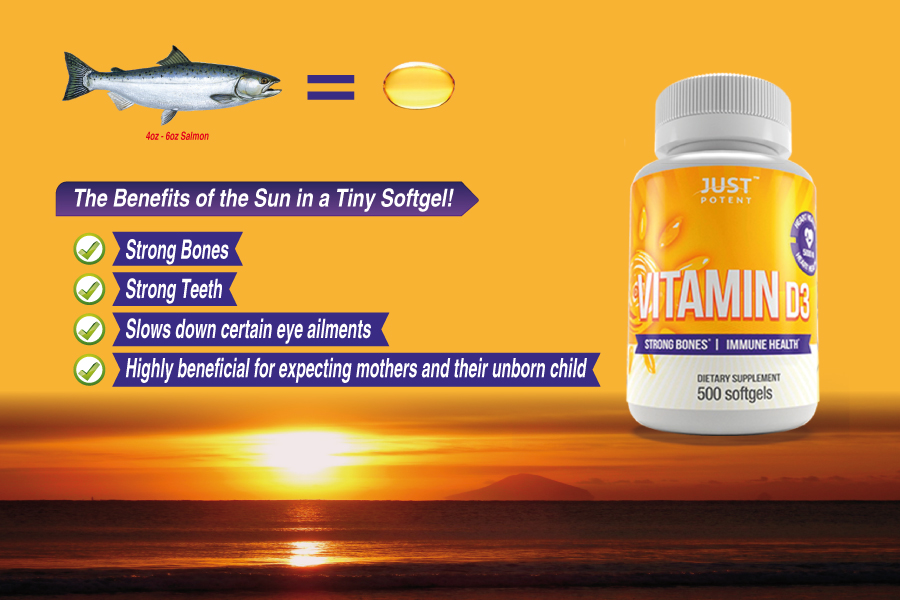
At
simultaneous treatment with cardiac glycosides requires ECG monitoring and
clinical condition, since calcium preparations can potentiate
therapeutic and toxic effects of cardiac glycosides.
Preparations
calcium and vitamin D 3 may increase absorption
tetracyclines from the gastrointestinal tract. Therefore, the time interval
between taking a tetracycline drug and Calcium-D3-MIC should
be at least 3 hours.
For
to prevent a decrease in the absorption of bisphosphonates or sodium fluoride drugs,
it is recommended to take Calcium-D3-MIC not earlier than 2 hours later
after taking them.
Glucocorticosteroids
reduce calcium absorption, so treatment with glucocorticosteroids may
require an increase in the dose of Calcium-D3-MIC.
Simultaneous
treatment with Kolestyramine preparations or laxatives based on
mineral or vegetable oils can reduce the absorption of vitamin D 3 .
At
the simultaneous use of thiazide diuretics increases the risk
the occurrence of hypercalcemia, because they increase tubular
calcium reabsorption. Furosemide and other loop diuretics, on the other hand,
Furosemide and other loop diuretics, on the other hand,
increase the excretion of calcium by the kidneys.
U
patients who are simultaneously taking cardiac glycosides and / or diuretics,
it is necessary to control the concentration of calcium and creatinine in the blood serum.
Overdose
Overdose symptoms:
Anorexia,
thirst, polyuria, decreased appetite, dizziness, fainting,
weakness, nausea, vomiting, hypercalciuria, hypercalcemia, hypercreatinemia.
With prolonged use, calcification of blood vessels and tissues.
Treatment:
Introduction
in the body of a large amount of fluid, the use of loop diuretics
(e.g. Furosemide), glucocorticosteroids, calcitonin, bisphosphonates. When
Seek medical attention if signs of overdose are detected.
Special instructions
B
during the treatment period, it is necessary to constantly monitor the excretion of calcium ions in the urine
and the concentration of calcium and creatinine ions in plasma (in case of development
calciuria exceeding 7.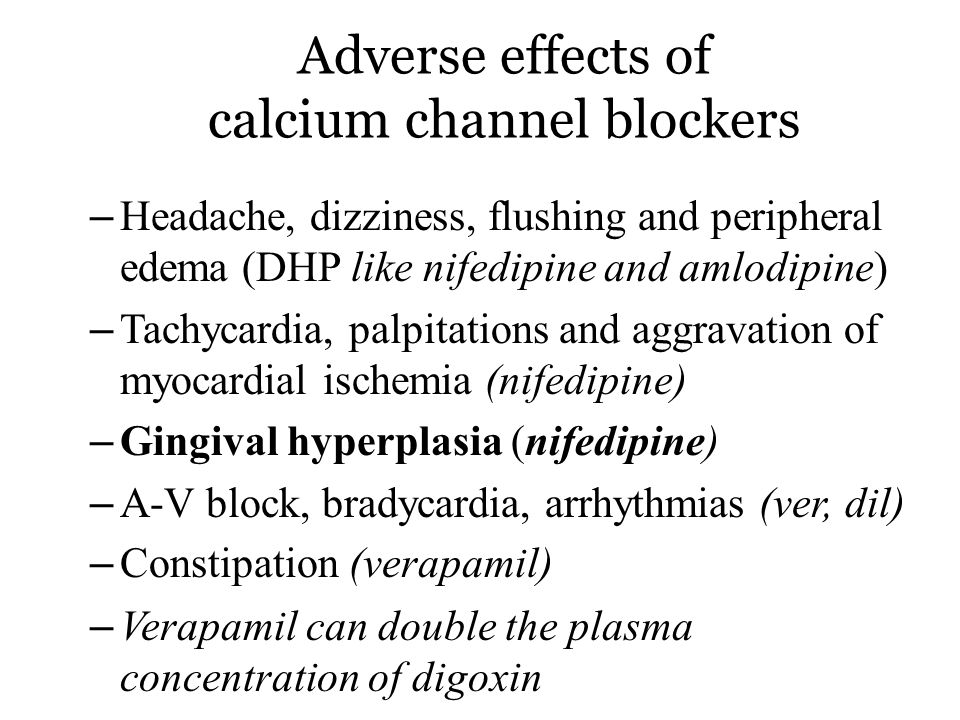 5 mmol/day (300 mg/day)
5 mmol/day (300 mg/day)
reduce dose or stop taking).
Vo
to avoid overdose, additional intake must be taken into account
vitamin D 3 from other sources.
Reception
foods containing oxalates (sorrel, spinach) and phytin (cereals) reduces
calcium absorption, so you should not take Calcium-D3-MIC for
two hours after taking sorrel, spinach, cereals.
Product form
Capsules.
By
10 capsules in a blister pack, 6 blister packs
together with instructions for use are placed in a pack of cardboard.
Terms of dispensing from pharmacies
Without
doctor’s prescription.
Storage conditions
Store
in a place protected from moisture and light at a temperature of 15 ° C
up to 25 °С.
Store
in a place inaccessible to children.
Expiry date
2
of the year.
Not
use after the expiration date.
Update date: 10/31/2022
Order in pharmacies
Region selection:
Altai TerritoryAmur RegionArkhangelsk RegionAstrakhan RegionBaikonurBelgorod RegionBryansk RegionVladimir RegionVolgograd RegionVologda RegionVoronezh RegionJewish Autonomous RegionTransbaikal TerritoryIvanovo RegionIrkutsk RegionKabardino-Balkar RepublicKaliningrad RegionKaluga RegionKamchatka TerritoryKarachay-Cherkess RepublicKemerovo RegionKirov RegionKostrom Krasnodar RegionKrasnoyarsk RegionKurgan RegionKurgan RegionLeningrad RegionLipetsk RegionMagadan RegionMoscowMoscow RegionMurmansk RegionNenets Autonomous OkrugNizhny Novgorod RegionNovgorod RegionNovosibirsk RegionOmsk RegionOrenburg RegionOryol RegionPenza RegionPerm RegionPrimorsky RegionPskov RegionRepublic of AdygeaRepublic Altai Republic of Bashkortostan Republic of Buryatia Republic of Dagestan Republic of Ingushetia Republic of Kalmykia Republic of Karelia Republic of Komi Republic of Crimea Republic of Mari El Republic of Mordovia Republic of Sakha (Yakutia) Republic of North Ossetia-Alania Tovskaya OblastSakhalin OblastSverdlovsk OblastSevastopolSmolensk OblastStavropol KraiTambov OblastTver OblastTomsk OblastTula OblastTyumen OblastUdmurt RepublicUlyanovsk OblastKhabarovsk KraiKhanty-Mansiysk Autonomous OkrugChelyabinsk OblastChechen RepublicChuvash RepublicChukotka Autonomous OkrugYamalo-Nenets Autonomous OkrugYaroslavl Region
The information provided on drug prices is not an offer to sell or buy goods.
The information is intended solely for comparing prices in stationary pharmacies operating in
in accordance with Article 55 of the Federal Law “On the Circulation of Medicines” dated April 12, 2010 No. 61-FZ.
Reviews
Read all reviews and leave your own.
Information for healthcare professionals only.
Are you a healthcare professional?
Calcium-D3-MIC – instructions for use, doses, side effects, reviews of the drug: capsules, 166.7 mg + 66.7 IU
Analogs
Order in pharmacies
Order
drug
All forms of release, dosages, registration certificates, drug manufacturers, drug characteristics
Calcium-D3-MIC (capsules, 166.7 mg + 66.7 IU), instructions for medical use RU No. LSR-000019/09
Date last modified: 04/29/2021
Contents
- Active substance
- ATX
- Nosological classification (ICD-10)
- Pharmacological group
- Dosage form
- Compound
- pharmachologic effect
- Description of the dosage form
- Pharmacokinetics
- Indications
- Contraindications
- Use during pregnancy and lactation
- Dosage and administration
- Side effects
- Interaction
- Overdose
- special instructions
- Release form
- Terms of dispensing from pharmacies
- Storage conditions
- Best before date
- Order in Moscow pharmacies
- Reviews
Active ingredient
Calcium carbonate + Colecalciferol (Calcium carbonate + Colecalciferol)
ATX
A12AX Calcium preparations in combination with vitamin D and/or other preparations
Nosological classification (ICD-10)
ICD-10 code list
- E55 Vitamin D deficiency
- E58 Nutritional calcium deficiency
- M80.
 9 Osteoporosis with pathological fracture, unspecified
9 Osteoporosis with pathological fracture, unspecified - M81.9Osteoporosis, unspecified
Pharmacological group
Bone and cartilage metabolism correctors in combinations
Vitamins and vitamin-like products in combinations
Dosage form
Capsules.
Composition
1
capsule contains:
Active ingredients:
Calcium
carbonate – 416.3 mg (in terms of calcium – 166.7 mg),
colecalciferol type 100 CWS – 0.667 mg (in terms of
colecalciferol – 0.001667 mg (66.7 IU)).
Composition
cholecalciferol type 100 CWS: cholecalciferol crystalline, α‑tocopherol,
soybean oil, corn starch, hydrolyzed gelatin, sucrose.
Excipient:
Starch
potato.
Composition of the gelatin capsule shell:
Composition
hard gelatin capsule bodies: gelatin, purified water, titanium dioxide
E171; composition of the cap of a hard gelatin capsule: gelatin, purified water,
titanium dioxide E171, alluring red dye E129, dye
quinoline yellow E104.
Combined
drug, the action of which is due to its constituent components.
Regulates the exchange of calcium and phosphate ions, reduces resorption and increases
bone density, compensates for the lack of calcium ions and vitamin D 3
in the body, enhances the absorption of calcium ions in the intestine and reabsorption
phosphate in the kidneys, promotes bone mineralization.
Calcium
carbonate is involved in the formation of bone tissue, blood clotting,
in maintaining stable cardiac activity, in the implementation of processes
transmission of nerve impulses. Application of calcium and vitamin D 3
prevents an increase in the production of parathyroid hormone, which is
stimulator of increased bone resorption.
Description of dosage form
Capsules
hard, gelatinous No. 0 cylindrical shape with hemispherical ends
with white body and orange lid.
Content
capsules – powder of white or almost white color.
Pharmacokinetics
Vitamin D 3
absorbed in the small intestine. Calcium is absorbed in ionized form
in the proximal small intestine through active
transport mechanism.
Readings
–
Prevention and
treatment and deficiency of calcium and/or vitamin D 3 .
–
With insufficient
intake of calcium and vitamin D 3 into the body against the background
malnutrition.
–
With increased
body needs for calcium and vitamin D 3
during pregnancy and breastfeeding, as well as in children over 12
years during a period of intensive growth.
–
Prevention and
as part of the complex therapy of osteoporosis (menopausal, senile,
“steroid”, idiopathic, etc. ).
).
Contraindications
–
Hypercalcemia
(increased concentration of calcium in the blood).
–
Hypercalciuria
(increased calcium in the urine).
–
Nephurolithiasis.
–
Hypervitaminosis
vitamin D 3 .
–
Increased
sensitivity to the components of the drug.
–
severe renal
failure.
–
active form
tuberculosis.
–
Sarcoidosis.
–
Osteoporosis,
caused by immobilization.
–
Urolithiasis
disease.
–
Atherosclerosis.
–
Childhood
up to 12 years old.
With caution
Renal
insufficiency, benign granulomatosis, taking glycosides and thiazide
diuretics, pregnancy, lactation.
Use in pregnancy and lactation
Daily
the dose should not exceed 1500 mg calcium and 600 IU vitamin D 3 .
Hypercalcemia developing against the background of an overdose during pregnancy
can cause defects in the mental and physical development of the child.
Vitamin D 3
and its metabolites can pass into breast milk, therefore, it is necessary to take into account
intake of calcium and vitamin D 3 from other sources in the mother
and child. An overdose during pregnancy may lead to
mental and physical development of the child.
Dosage and Administration
Information for healthcare professionals only.
Are you a healthcare professional?
Adults and children over 12:
2-3 capsules 2 times a day, morning and evening, mainly
while eating.
Side effects
Allergic
reactions, dysfunction of the gastrointestinal tract (constipation or diarrhea, flatulence,
nausea, abdominal pain), hypercalcemia and hypercalciuria (increased
calcium in blood or urine).
Interactions
Information for healthcare professionals only.
Are you a healthcare professional?
Activity
vitamin D 3 may decrease when used simultaneously with phenytoin
or barbiturates.
At
simultaneous treatment with cardiac glycosides requires ECG monitoring and
clinical condition, since calcium preparations can potentiate
therapeutic and toxic effects of cardiac glycosides.
Preparations
calcium and vitamin D 3 may increase absorption
tetracyclines from the gastrointestinal tract. Therefore, the time interval
between taking a tetracycline drug and Calcium-D3-MIC should
be at least 3 hours.
For
to prevent a decrease in the absorption of bisphosphonates or sodium fluoride drugs,
it is recommended to take Calcium-D3-MIC not earlier than 2 hours later
after taking them.
Glucocorticosteroids
reduce calcium absorption, so treatment with glucocorticosteroids may
require an increase in the dose of Calcium-D3-MIC.
Simultaneous
treatment with Kolestyramine preparations or laxatives based on
mineral or vegetable oils can reduce the absorption of vitamin D 3 .
At
the simultaneous use of thiazide diuretics increases the risk
the occurrence of hypercalcemia, because they increase tubular
calcium reabsorption. Furosemide and other loop diuretics, on the other hand,
Furosemide and other loop diuretics, on the other hand,
increase the excretion of calcium by the kidneys.
U
patients who are simultaneously taking cardiac glycosides and / or diuretics,
it is necessary to control the concentration of calcium and creatinine in the blood serum.
Overdose
Overdose symptoms:
Anorexia,
thirst, polyuria, decreased appetite, dizziness, fainting,
weakness, nausea, vomiting, hypercalciuria, hypercalcemia, hypercreatinemia.
With prolonged use, calcification of blood vessels and tissues.
Treatment:
Introduction
in the body of a large amount of fluid, the use of loop diuretics
(e.g. Furosemide), glucocorticosteroids, calcitonin, bisphosphonates. When
Seek medical attention if signs of overdose are detected.
Special instructions
B
during the treatment period, it is necessary to constantly monitor the excretion of calcium ions in the urine
and the concentration of calcium and creatinine ions in plasma (in case of development
calciuria exceeding 7.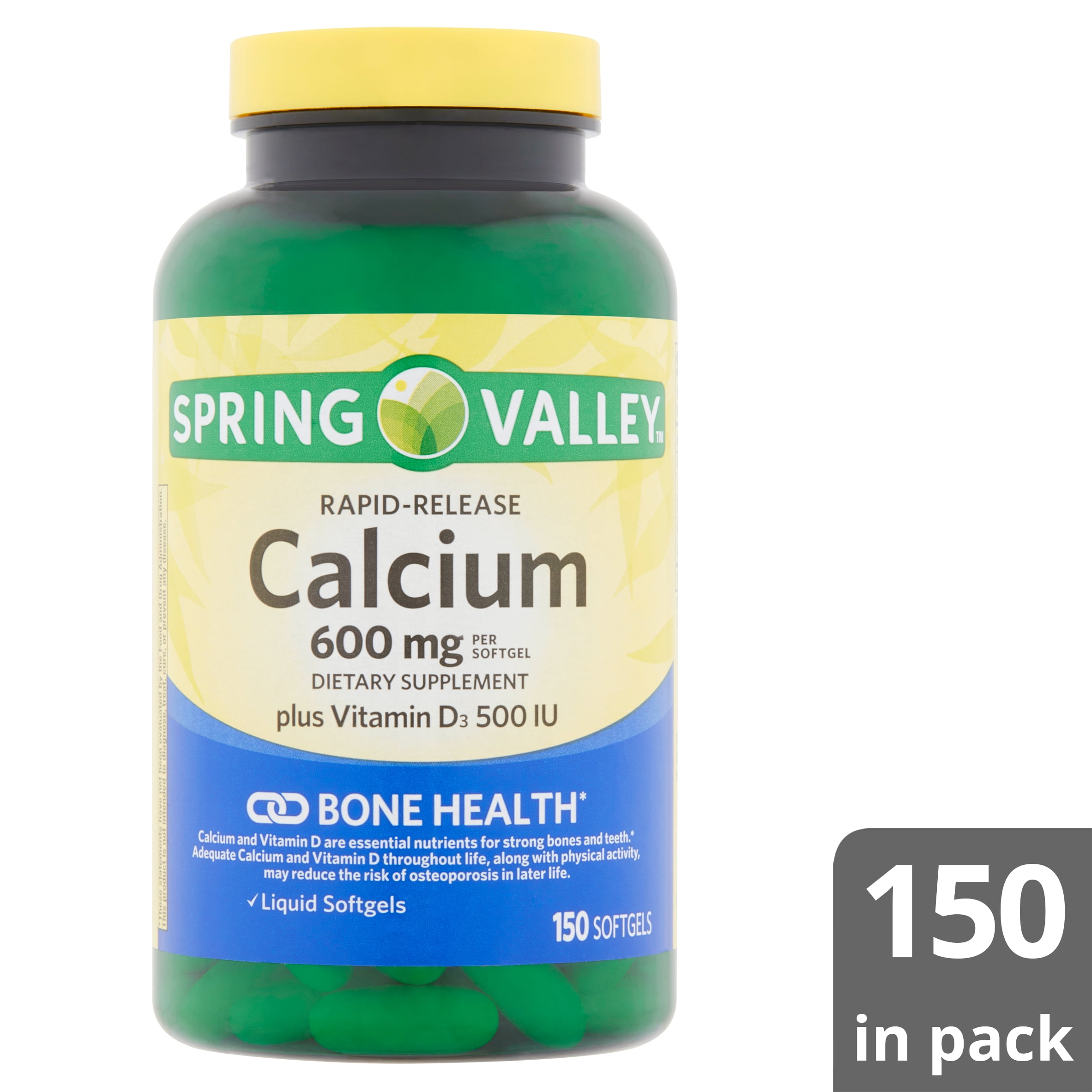 5 mmol/day (300 mg/day)
5 mmol/day (300 mg/day)
reduce dose or stop taking).
Vo
to avoid overdose, additional intake must be taken into account
vitamin D 3 from other sources.
Reception
foods containing oxalates (sorrel, spinach) and phytin (cereals) reduces
calcium absorption, so you should not take Calcium-D3-MIC for
two hours after taking sorrel, spinach, cereals.
Product form
Capsules.
By
10 capsules in a blister pack, 6 blister packs
together with instructions for use are placed in a pack of cardboard.
Terms of dispensing from pharmacies
Without
doctor’s prescription.
Storage conditions
Store
in a place protected from moisture and light at a temperature of 15 ° C
up to 25 °С.
Store
in a place inaccessible to children.
Expiry date
2
of the year.
Not
use after the expiration date.
Update date: 10/31/2022
Order in pharmacies
Region selection:
Altai TerritoryAmur RegionArkhangelsk RegionAstrakhan RegionBaikonurBelgorod RegionBryansk RegionVladimir RegionVolgograd RegionVologda RegionVoronezh RegionJewish Autonomous RegionTransbaikal TerritoryIvanovo RegionIrkutsk RegionKabardino-Balkar RepublicKaliningrad RegionKaluga RegionKamchatka TerritoryKarachay-Cherkess RepublicKemerovo RegionKirov RegionKostrom Krasnodar RegionKrasnoyarsk RegionKurgan RegionKurgan RegionLeningrad RegionLipetsk RegionMagadan RegionMoscowMoscow RegionMurmansk RegionNenets Autonomous OkrugNizhny Novgorod RegionNovgorod RegionNovosibirsk RegionOmsk RegionOrenburg RegionOryol RegionPenza RegionPerm RegionPrimorsky RegionPskov RegionRepublic of AdygeaRepublic Altai Republic of Bashkortostan Republic of Buryatia Republic of Dagestan Republic of Ingushetia Republic of Kalmykia Republic of Karelia Republic of Komi Republic of Crimea Republic of Mari El Republic of Mordovia Republic of Sakha (Yakutia) Republic of North Ossetia-Alania Tovskaya OblastSakhalin OblastSverdlovsk OblastSevastopolSmolensk OblastStavropol KraiTambov OblastTver OblastTomsk OblastTula OblastTyumen OblastUdmurt RepublicUlyanovsk OblastKhabarovsk KraiKhanty-Mansiysk Autonomous OkrugChelyabinsk OblastChechen RepublicChuvash RepublicChukotka Autonomous OkrugYamalo-Nenets Autonomous OkrugYaroslavl Region
The information provided on drug prices is not an offer to sell or buy goods.


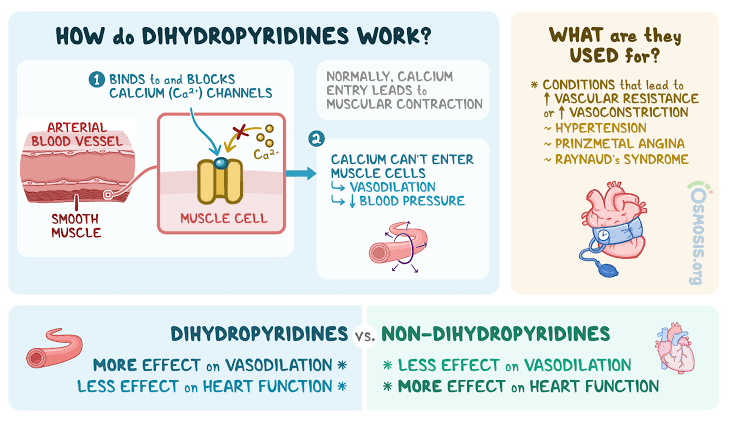

 Taking calcium by mouth doesn’t reduce the risk for breast cancer.
Taking calcium by mouth doesn’t reduce the risk for breast cancer. To avoid this interaction, dolutegravir should be taken 2 hours before or 6 hours after taking calcium.
To avoid this interaction, dolutegravir should be taken 2 hours before or 6 hours after taking calcium. ” This can decrease the amount of these drugs that the body absorbs. To avoid this interaction, take these drugs at least 2 hours before or 4 to 6 hours after calcium.
” This can decrease the amount of these drugs that the body absorbs. To avoid this interaction, take these drugs at least 2 hours before or 4 to 6 hours after calcium.
 Taking large amounts of calcium with some “water pills” might cause there to be too much calcium in the body. This could cause serious side effects, including kidney problems.
Taking large amounts of calcium with some “water pills” might cause there to be too much calcium in the body. This could cause serious side effects, including kidney problems.:max_bytes(150000):strip_icc()/lessening-prednisone-side-effects-1941741_final-8fb970a492864547a61cfbdc4be58d13.jpg)
:max_bytes(150000):strip_icc()/health-benefits-of-calcium-4579834-5c6f25cf46e0fb00014361c7.png) 9 Osteoporosis with pathological fracture, unspecified
9 Osteoporosis with pathological fracture, unspecified 9 Osteoporosis with pathological fracture, unspecified
9 Osteoporosis with pathological fracture, unspecified